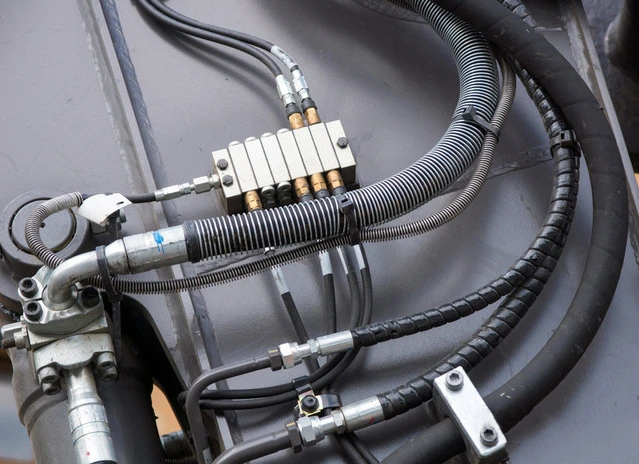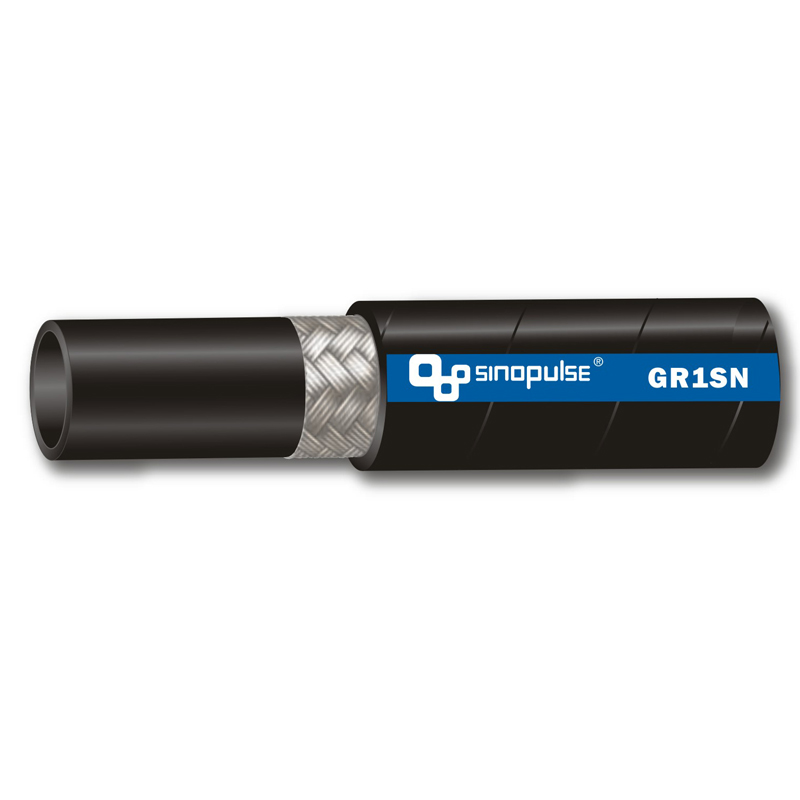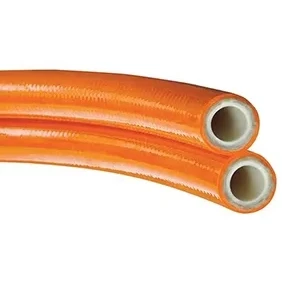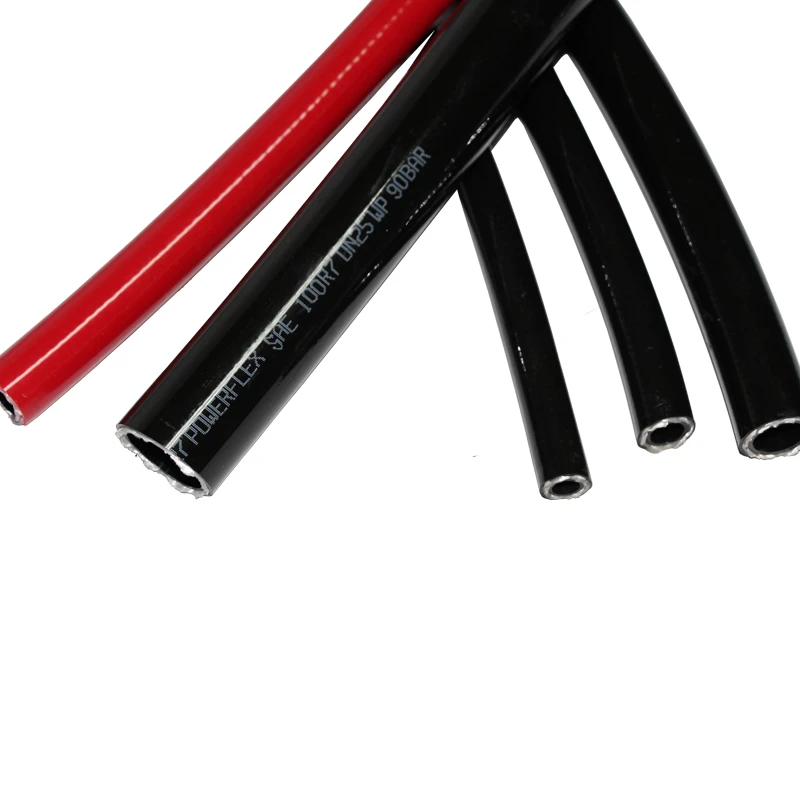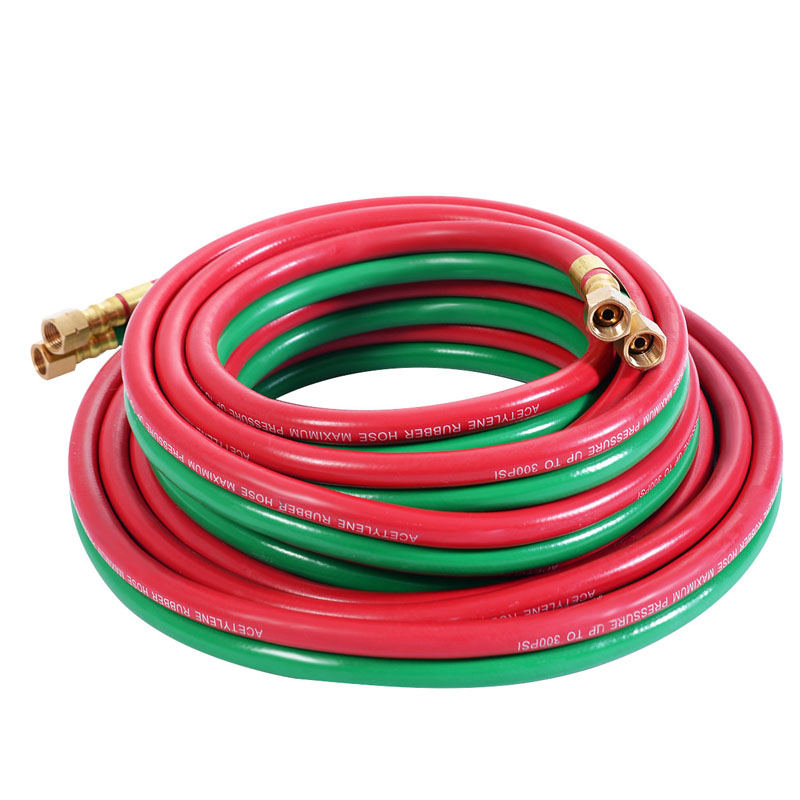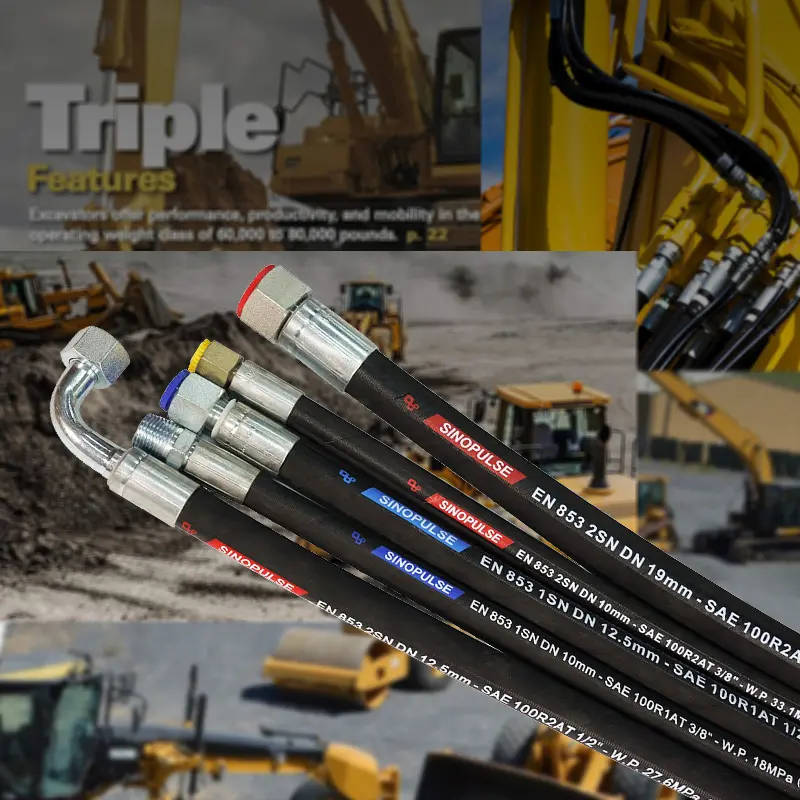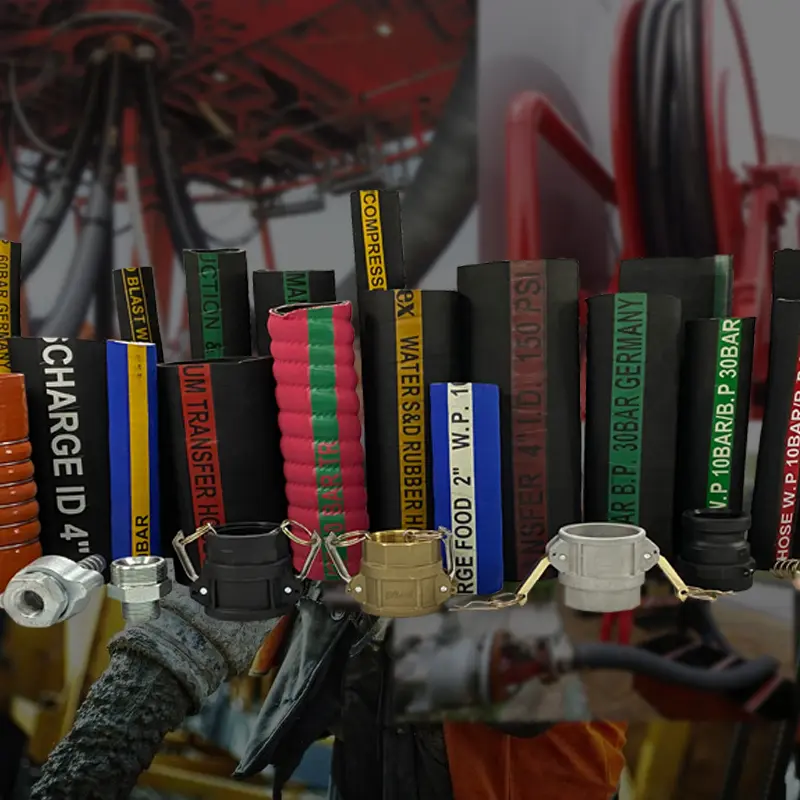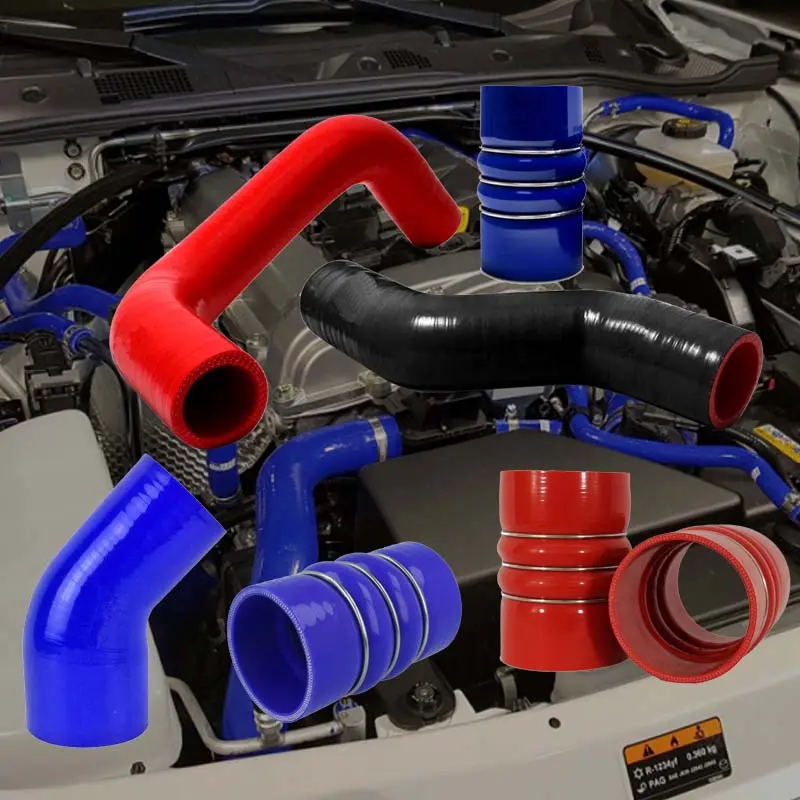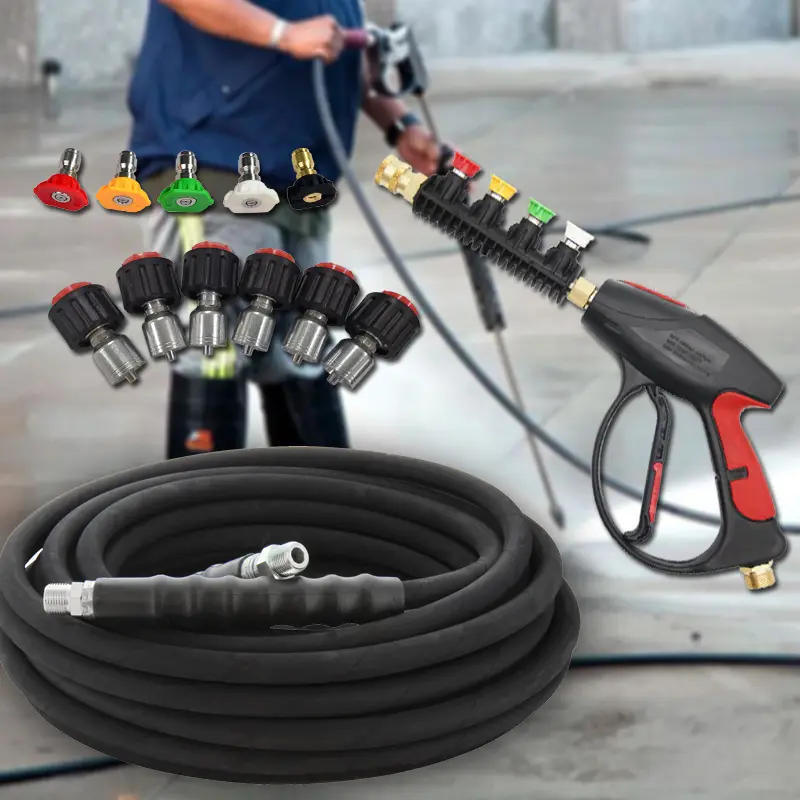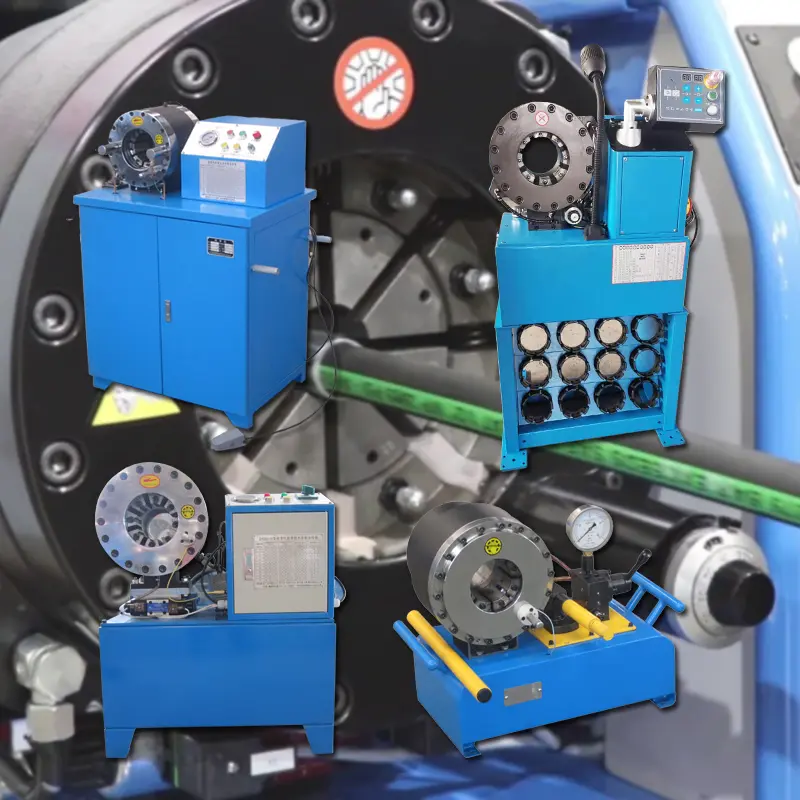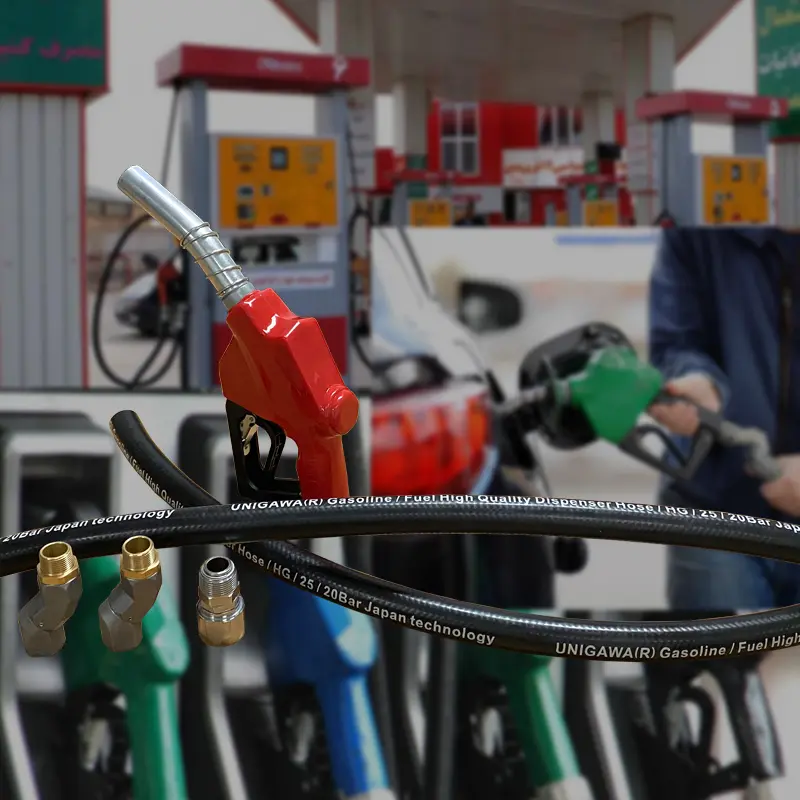Unveiling the Power and Precision of **Tank Truck Rubber Hose 300 PSI**: A Deep Dive into Liquid Transfer Excellence
In the vast landscape of industrial fluid transfer, safety, efficiency, and reliability are paramount. Among the critical components ensuring seamless operations, the **Tank Truck Rubber Hose 300 PSI** stands out as a workhorse, specifically engineered for the demanding task of transferring petroleum products, chemicals, and various industrial liquids. This comprehensive guide delves into the essential aspects of this high-performance hose, covering its market significance, technical intricacies, manufacturing excellence, diverse applications, and the trust it builds within the industry.
Industry Trends and the Growing Demand for High-Performance Hoses
The global fluid transfer hose market is experiencing steady growth, driven by expansion in the oil and gas, chemical, and transportation sectors. Factors such as increasing intermodal freight transport, stringent environmental regulations pushing for leak-proof and durable solutions, and the continuous need for safe and efficient liquid handling contribute to the rising demand for specialized hoses. The market for industrial rubber hoses, in particular, is projected to reach USD 16.5 billion by 2027, with a compound annual growth rate (CAGR) of approximately 4.5% from 2020, largely due to their superior flexibility, chemical resistance, and cost-effectiveness compared to rigid piping in mobile applications. The emphasis on worker safety and environmental protection mandates the use of robust and certified hoses like the Tank Truck Rubber Hose 300 PSI, which meets or exceeds industry standards for pressure, temperature, and chemical compatibility, minimizing risks of spills and accidents.
Technical Parameters: The Core of **Tank Truck Rubber Hose 300 PSI** Performance
The exceptional performance of a Tank Truck Rubber Hose 300 PSI is defined by its meticulous design and material selection. Understanding these technical specifications is crucial for ensuring optimal and safe operation across various applications. Here’s a breakdown:
- Construction: Typically features a multi-layered design.
- Inner Tube: Often made from Nitrile (NBR) or blend, offering excellent resistance to petroleum products (gasoline, diesel, oil, ethanol blends), mild chemicals, and solvents. This ensures minimal degradation and prevents contamination of the transferred fluid.
- Reinforcement: High-tensile synthetic textile cords (e.g., polyester, aramid) provide the necessary burst pressure rating and prevent kinking or collapse under vacuum. Multiple plies are often cross-wound or spiraled for superior strength and flexibility. Some designs may incorporate static-dissipating wire for electrical conductivity, preventing static build-up during fluid transfer.
- Cover: Usually a weather, abrasion, and ozone-resistant synthetic rubber compound (e.g., Chloroprene/Neoprene, SBR/EPDM blend). This outer layer protects the hose from external damage, UV radiation, and harsh environmental conditions, extending its service life.
- Working Pressure: Rated for a maximum working pressure of 300 PSI (Pounds per Square Inch), providing a significant safety margin for typical tank truck operations. This rating ensures the hose can safely handle the pressures exerted during pumping and gravity transfers.
- Burst Pressure: Often has a safety factor of 3:1 or 4:1, meaning the burst pressure would be 900 PSI or 1200 PSI, respectively. This critical parameter highlights the hose's ability to withstand sudden pressure spikes without failure.
- Temperature Range: Designed to operate effectively across a broad temperature spectrum, typically from -40°F (-40°C) to +180°F (+82°C), accommodating diverse climatic conditions and fluid temperatures.
- Bend Radius: Engineered for flexibility, allowing tight turns on tank trucks and transfer sites without kinking or compromising flow, which is crucial for maneuvering in confined spaces.
- Vacuum Rating: Often rated for full vacuum (29.9 in Hg), ensuring the hose will not collapse when used in suction applications, such as emptying tanks or siphoning.
Below is a typical specification table for a Tank Truck Rubber Hose 300 PSI:
| Parameter | Specification | Typical Value/Description |
|---|---|---|
| Product Name | Tank Truck Rubber Hose 300 PSI | High-performance hose for liquid transfer |
| Inner Tube Material | Nitrile (NBR) or specially formulated blend | Oil, fuel, and chemical resistant |
| Reinforcement | High-tensile synthetic textile cord plies, helix wire (optional) | Strength, kink resistance, full vacuum rating |
| Outer Cover Material | Weather, abrasion, ozone resistant synthetic rubber (e.g., SBR/EPDM, Neoprene) | Durability, UV and environmental protection |
| Working Pressure (WP) | 300 PSI (20.7 Bar) | Max continuous operating pressure |
| Burst Pressure (BP) | 900-1200 PSI (62-82 Bar) | Minimum burst pressure (3:1 or 4:1 safety factor) |
| Temperature Range | -40°F to +180°F (-40°C to +82°C) | Operating temperature limits |
| Available Sizes (ID) | 1" to 6" (25mm to 152mm) | Common internal diameters |
| Bend Radius | Varies by ID (e.g., 4x ID for 4" hose) | Minimum bend radius without kinking |
| Vacuum Rating | Full vacuum (29.9 in Hg) | Prevents collapse during suction |
| Standard Lengths | 50 ft, 100 ft, custom lengths available | Typical hose roll lengths |
| Color | Black (standard) | Common appearance |
Application Scenarios: Where **Tank Truck Rubber Hose 300 PSI** Excels
The versatility and robust design of the Tank Truck Rubber Hose 300 PSI make it indispensable across numerous industries and applications:
- Petroleum and Fuel Transfer: This is its primary domain. It's used for the loading and unloading of gasoline, diesel, kerosene, aviation fuel, and heating oil from tank trucks to storage tanks, aircraft, or other vehicles. Its resistance to various fuel blends, including ethanol and biodiesel, ensures long-term reliability.
- Chemical Transport: Suitable for transferring a range of industrial chemicals, mild acids, bases, and solvents that are compatible with its NBR inner tube. Always verify chemical compatibility for specific applications to prevent degradation.
- Industrial Liquids: Used for general industrial liquid transfer where high pressure and durability are required, such as water, light oils, and lubricants in manufacturing plants, construction sites, and marine applications.
- Waste and Septic Service: While heavier duty hoses exist for extreme waste, this hose can handle light septic and waste transfer operations due to its flexibility and abrasion resistance.
- Marine and Ship-to-Shore Transfer: For lighter duty bunkering or fluid transfer operations in ports, connecting vessels to shore facilities for fuel or water transfer.
In these scenarios, the hose's technical advantages truly shine, providing reliable and safe fluid transfer.
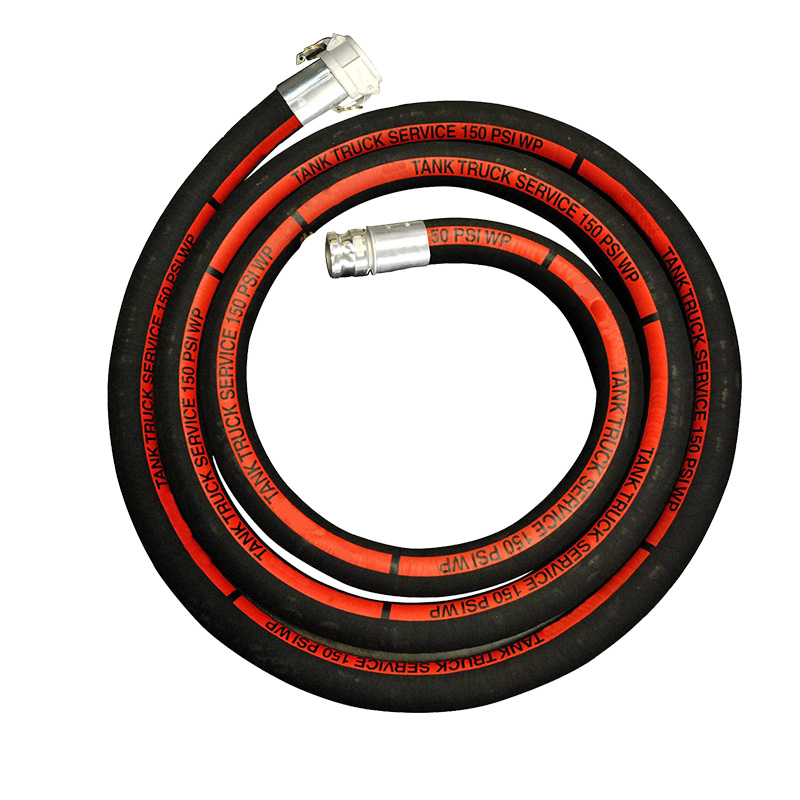
Figure 1: A **Tank Truck Rubber Hose 300 PSI** connecting a tank truck for fluid transfer operations.
Technical Advantages: Why Choose a **Tank Truck Rubber Hose 300 PSI**?
Investing in a high-quality Tank Truck Rubber Hose 300 PSI offers several distinct advantages that directly impact operational efficiency, safety, and cost-effectiveness:
- Superior Durability and Longevity: Engineered with robust synthetic rubber compounds and high-strength reinforcement, these hoses are built to withstand harsh conditions, including abrasion, kinking, ozone, and UV exposure. This translates to a significantly longer service life compared to inferior alternatives, reducing replacement frequency and downtime.
- Enhanced Safety: The 300 PSI working pressure and high burst pressure ratings provide a critical safety margin, minimizing the risk of ruptures, leaks, and spills even under pressure surges. The optional static-dissipating wire ensures electrical continuity, preventing static electricity build-up and potential ignition hazards during flammable liquid transfer.
- Excellent Flexibility: Despite its strength, the hose maintains remarkable flexibility, crucial for maneuvering around obstacles and connecting to various ports on tank trucks and storage facilities. This ease of handling reduces operator fatigue and speeds up transfer processes.
- Broad Chemical Compatibility: The specialized inner tube materials, particularly Nitrile (NBR), offer broad resistance to a wide range of petroleum products and certain chemicals, ensuring versatility across different fluid types without compromising hose integrity.
- Cost-Effectiveness: While the initial investment might be higher than general-purpose hoses, the extended service life, reduced maintenance, and prevention of costly spills and environmental clean-ups make the Tank Truck Rubber Hose 300 PSI a highly cost-effective solution in the long run.
- Compliance with Industry Standards: Reputable manufacturers design these hoses to comply with or exceed standards set by organizations like NAHAD (National Association for Hose and Accessories Distribution), ASTM (American Society for Testing and Materials), and various API (American Petroleum Institute) guidelines, ensuring reliability and acceptance in regulated industries.
Craftsmanship Details: The Manufacturing Process of **Tank Truck Rubber Hose 300 PSI**
The manufacturing of a high-performance Tank Truck Rubber Hose 300 PSI is a sophisticated process that combines material science with precision engineering. It's far more intricate than simple casting or CNC machining; it involves a series of specialized steps to build a multi-layered, resilient composite structure. The core processes include extrusion, reinforcement, and vulcanization, all under stringent quality control measures to ensure every hose meets the demanding performance specifications.
1. Inner Tube Extrusion
The process begins with the precision extrusion of the inner tube. Raw rubber compounds, typically Nitrile (NBR) or a specialized blend, are mixed with additives to achieve the desired chemical resistance, flexibility, and impermeability. This mixture is then heated and forced through a die to create a continuous, uniform tube of the specified internal diameter. This step is critical for ensuring the hose's fluid compatibility and preventing material contamination.
2. Reinforcement Application
Once the inner tube is formed, it moves to the reinforcement stage. High-tensile synthetic textile cords (e.g., polyester, rayon, aramid) are precisely wound or braided around the inner tube. Multiple layers, often counter-wound, are applied to provide exceptional pressure resistance and prevent kinking. For vacuum applications or to maintain structural integrity, a helix wire (steel or plastic) might be incorporated between or within the textile plies. This stage largely determines the hose's working pressure, burst pressure, and flexibility.
3. Outer Cover Extrusion
Following reinforcement, an outer cover layer is extruded over the reinforced core. This cover, typically made from weather, ozone, and abrasion-resistant synthetic rubber (like SBR/EPDM or Chloroprene), acts as a protective shield against environmental elements, physical damage, and UV radiation. Its composition ensures the hose's longevity in outdoor and demanding industrial environments.
4. Curing (Vulcanization)
The multi-layered hose assembly then undergoes a crucial vulcanization (curing) process. This involves heating the hose under controlled conditions (e.g., in an autoclave with steam or in a continuous vulcanization line). Vulcanization chemically cross-links the rubber polymers, transforming the pliable, uncured rubber into a stable, elastic, and highly durable material with improved mechanical properties, heat resistance, and chemical resistance. This step permanently binds all layers together.
5. Finishing and Testing
After curing, the hose is cooled, cut to specified lengths, and prepared for final inspection and testing. Each batch, and often each length, undergoes rigorous quality checks. Key tests include:
- Hydrostatic Testing: Hoses are subjected to pressures significantly higher than their working pressure (typically 2x WP) to confirm burst resistance and structural integrity.
- Visual Inspection: Checking for defects, consistent dimensions, and proper marking.
- Dimensional Checks: Verifying inner and outer diameters, wall thickness, and length.
- Flexibility and Kink Resistance Tests: Ensuring the hose performs as expected under typical handling.
- Adhesion Tests: Verifying bond strength between layers.
- Electrical Conductivity Testing: For hoses requiring static dissipation.
Compliance with standards such as ISO 9001 for quality management, and specific product standards like those from ASTM or NAHAD, is verified during this stage. The projected service life of a well-manufactured Tank Truck Rubber Hose 300 PSI, under proper usage and maintenance, can range from 5 to 10 years or more, highlighting the importance of this meticulous manufacturing process.
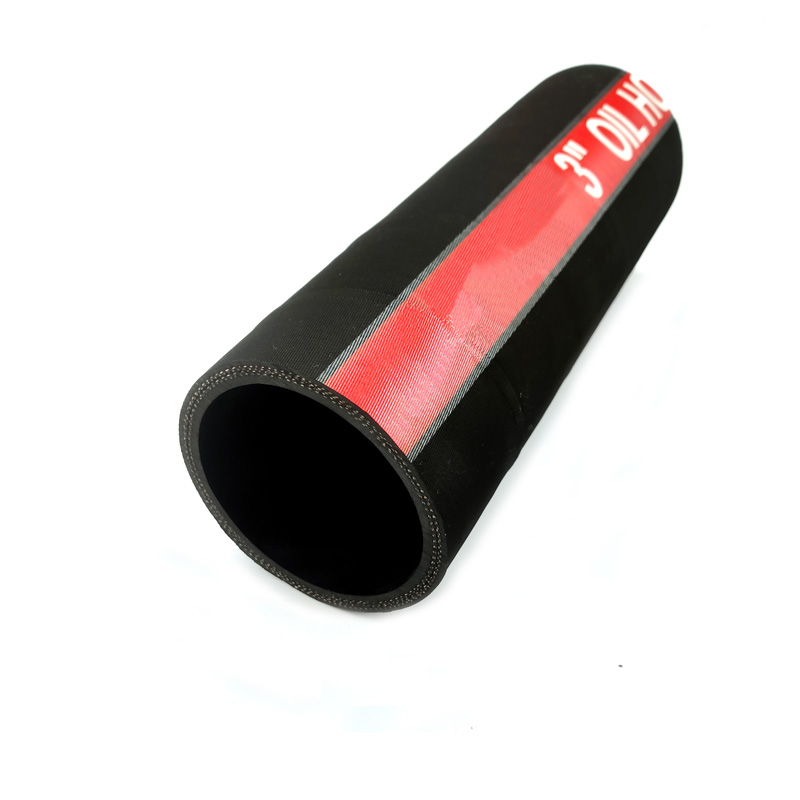
Figure 2: Cross-section view illustrating the multi-layered construction of a high-pressure **Tank Truck Rubber Hose 300 PSI**.
Manufacturer Comparison: Choosing the Right Partner
When selecting a supplier for your Tank Truck Rubber Hose 300 PSI needs, it's not just about the product itself, but the entire ecosystem of quality, service, and support. A reliable manufacturer will demonstrate:
- Certifications and Compliance: Look for manufacturers with ISO 9001 certification for quality management. Products should adhere to relevant industry standards like NAHAD, ASTM, and API specifications. This assures consistent product quality and safety.
- Material Expertise: A deep understanding of rubber compounding, reinforcement technologies, and liner materials is crucial. This expertise translates into hoses that offer superior chemical compatibility, temperature resistance, and durability.
- Rigorous Quality Control: Beyond standard tests, inquire about their internal QC protocols. Do they conduct batch testing, individual hose testing (e.g., hydrostatic proof testing on every hose)? What are their defect rates?
- Experience and Reputation: A manufacturer with decades of experience in the industrial hose sector, particularly in tank truck applications, will have a proven track record of delivering reliable solutions. Check for industry accolades, long-term customer relationships, and positive testimonials.
- Customization Capabilities: The ability to offer tailored solutions (specific lengths, end fittings, unique covers, or even custom formulations for highly specialized media) is a significant advantage.
- After-Sales Support and Warranty: Comprehensive warranty policies, readily available technical support, and efficient after-sales service (including maintenance guidelines and troubleshooting) are indicative of a manufacturer who stands behind their product.
- Global Presence and Supply Chain: For consistent supply, a manufacturer with a robust global supply chain ensures timely delivery and competitive pricing, even for large orders.
Customization Solutions for Your Specific Needs
While standard Tank Truck Rubber Hose 300 PSI products meet most requirements, many applications benefit from tailored solutions. Customization ensures optimal performance, safety, and operational efficiency:
- Custom Lengths: Hoses can be manufactured in specific lengths, minimizing waste and ensuring a perfect fit for a particular vehicle or transfer station.
- Integrated Fittings: Factory-installed end fittings (e.g., camlock, flange, NPT, tank truck fittings) ensure secure, leak-proof connections. Custom crimping or swaging processes provide superior hose assembly integrity.
- Specialized Covers: For highly abrasive environments, a heavier-duty cover or an ultra-tough UHMWPE (Ultra High Molecular Weight Polyethylene) cover can be applied. For extreme weather or chemical splash, specific rubber blends can be formulated.
- Color-Coding and Branding: Hoses can be color-coded for easy identification of different media or pressure ratings. Custom branding with company logos or specific warnings can also be integrated.
- Static Dissipation: For highly flammable liquids, hoses can be equipped with embedded copper wire or carbon black in the inner tube to ensure electrical continuity and dissipate static electricity, critical for preventing sparks.
- Media Specific Liners: While NBR is versatile, for highly aggressive chemicals or foodstuffs, alternative liners like UHMWPE or FEP (fluorinated ethylene propylene) can be used, ensuring chemical compatibility and purity.
Partnering with a manufacturer capable of these customizations ensures you get a hose system perfectly aligned with your operational demands, enhancing safety and extending service life.
Application Cases: Real-World Impact of **Tank Truck Rubber Hose 300 PSI**
The practical application of the Tank Truck Rubber Hose 300 PSI directly translates into tangible benefits for various industries:
Case Study 1: Large Fuel Distribution Network
A major fuel distribution company operating a fleet of over 500 tank trucks faced frequent hose replacements due to kinking, abrasion, and premature wear, especially in high-volume, continuous transfer operations. They switched to our Tank Truck Rubber Hose 300 PSI with an enhanced abrasion-resistant cover and integrated static dissipation wire. After two years, they reported a 40% reduction in hose failures and a significant decrease in operational downtime. The improved flexibility also reduced handling time by their drivers, leading to an estimated 5% increase in daily delivery efficiency across their fleet. Furthermore, the robust safety features minimized potential environmental spills, enhancing their corporate responsibility profile and reducing regulatory risks.
Case Study 2: Chemical Plant Logistics
A chemical manufacturing facility needed a reliable hose for transferring various solvents and liquid chemical intermediates between storage tanks and processing units. Their existing hoses struggled with chemical compatibility and quickly degraded. Implementing a custom-configured Tank Truck Rubber Hose 300 PSI with a specialized NBR/PVC blend inner tube and chemically resistant cover provided the perfect solution. The hose demonstrated superior resistance to the specific solvents, extending its service life from 6 months to over 3 years. This longevity led to substantial savings in replacement costs and a significant improvement in worker safety by eliminating frequent hose changes and associated exposure risks.
Customer Feedback:
"The Tank Truck Rubber Hose 300 PSI we acquired has been a game-changer for our fuel delivery operations. Its durability and flexibility are unmatched, and our drivers appreciate how much easier it is to handle. We've seen a noticeable drop in maintenance issues, translating directly to cost savings and improved turnaround times at our sites." - Logistics Manager, Petroleum Distributor.
"For years, we struggled with hoses failing due to the aggressive chemicals we transfer. The customized **Tank Truck Rubber Hose 300 PSI** provided by Hydraulic Hose Plus has exceeded our expectations. Its robust construction and chemical resistance have made our operations safer and more efficient. It's truly a product built for demanding environments." - Operations Director, Industrial Chemicals.
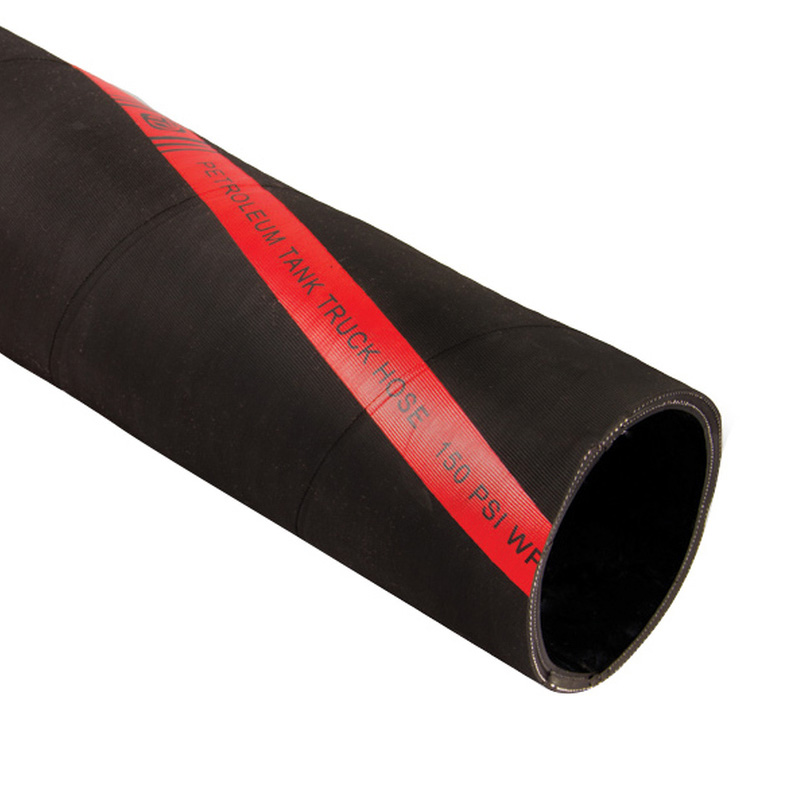
Figure 3: A durable and flexible **Tank Truck Rubber Hose 300 PSI** ready for deployment in critical liquid transfer applications.
Building Trust: Warranty, Delivery, and Customer Support
Our commitment extends beyond just providing a superior Tank Truck Rubber Hose 300 PSI. We believe in building lasting partnerships based on trust and reliability. This is reflected in our robust support infrastructure:
Quality Assurance and Warranty Commitment
Every Tank Truck Rubber Hose 300 PSI is manufactured under stringent quality control protocols, adhering to international standards like ISO 9001. We back our products with a comprehensive warranty against manufacturing defects, typically ranging from 12 to 24 months from the date of purchase, reflecting our confidence in their durability and performance. Specific warranty terms are provided with each product delivery.
Reliable Delivery Cycle
We understand the critical nature of timely delivery. Our efficient logistics and supply chain management ensure that your Tank Truck Rubber Hose 300 PSI orders are processed and dispatched promptly. Standard orders typically have a lead time of 3-5 business days for in-stock items, with custom solutions taking 2-3 weeks depending on complexity. Expedited shipping options are available upon request to meet urgent operational demands. Our global network ensures efficient delivery worldwide.
Dedicated Customer Support
Our team of technical experts and customer service professionals is always ready to assist you. From product selection and technical specifications to installation guidance and troubleshooting, we provide unparalleled support. We offer:
- Technical Consultation: Experts available to help you choose the right hose for your specific media and application.
- Installation and Maintenance Guides: Comprehensive documentation and advice to maximize hose life and ensure safe operation.
- Troubleshooting Assistance: Prompt support to address any performance concerns or issues.
- After-Sales Service: Our commitment doesn't end at delivery. We provide ongoing support to ensure your complete satisfaction.
Contact us via phone, email, or our online portal for prompt and professional assistance.
Frequently Asked Questions (FAQ) about **Tank Truck Rubber Hose 300 PSI**
Q1: What types of fluids can a **Tank Truck Rubber Hose 300 PSI** transfer?
A1: This hose is primarily designed for petroleum products such as gasoline, diesel, kerosene, fuel oil, and ethanol blends. Its NBR (Nitrile) inner tube also makes it suitable for many industrial oils and certain mild chemicals. Always verify chemical compatibility for specific applications.
Q2: What does "300 PSI" refer to in the hose name?
A2: "300 PSI" stands for 300 Pounds per Square Inch and represents the maximum working pressure (WP) that the hose can safely withstand during continuous operation. This ensures a substantial safety margin for typical tank truck transfer processes.
Q3: How does the manufacturing process ensure the hose's durability?
A3: Durability is ensured through a multi-stage process involving precision extrusion of the inner tube and outer cover from robust synthetic rubber compounds, and multi-ply reinforcement with high-tensile textile cords (and often helix wire). The crucial vulcanization (curing) process chemically bonds these layers, providing permanent strength, elasticity, and resistance to abrasion, ozone, and temperature extremes. Rigorous testing (hydrostatic, visual, dimensional) verifies quality.
Q4: Is static electricity a concern, and how is it mitigated with this hose?
A4: Yes, static electricity can build up during the transfer of flammable liquids, posing an ignition risk. Many Tank Truck Rubber Hose 300 PSI designs incorporate a static-dissipating inner tube (using conductive carbon black) and/or an embedded copper wire to ensure electrical continuity and safely dissipate static charges to the ground, preventing sparks.
Q5: What are the typical end fittings used with this hose?
A5: Common end fittings for Tank Truck Rubber Hose 300 PSI include camlock quick-connect couplings, NPT (National Pipe Taper) threaded fittings, flanges, and specific tank truck hose ends (e.g., male NPT with a swivel female camlock). These are often permanently crimped or swaged onto the hose for a secure and leak-proof connection.
Q6: What standards should a quality **Tank Truck Rubber Hose 300 PSI** adhere to?
A6: A high-quality hose should meet or exceed industry standards such as those from NAHAD (National Association for Hose and Accessories Distribution), ASTM (American Society for Testing and Materials), and potentially API (American Petroleum Institute) for specific oil and gas applications. Adherence to ISO 9001 for manufacturing quality management is also a strong indicator of reliability.
Q7: How can I maximize the service life of my **Tank Truck Rubber Hose 300 PSI**?
A7: To maximize service life, ensure proper storage (avoiding direct sunlight and extreme temperatures), handle the hose carefully to prevent kinking or crushing, use compatible end fittings, perform regular visual inspections for wear or damage, adhere to recommended bending radii, and ensure it is always used within its specified pressure and temperature limits. Proper cleaning after use, especially with chemicals, is also vital.
This is the last article
Product Application









